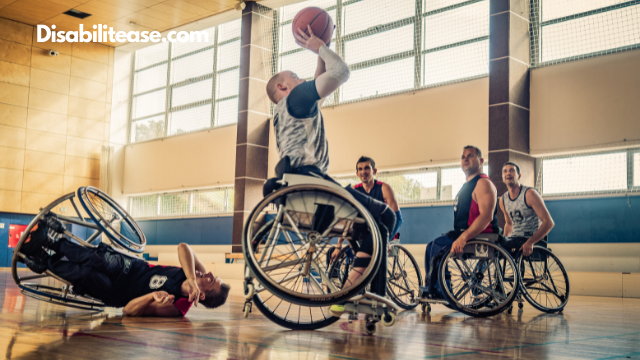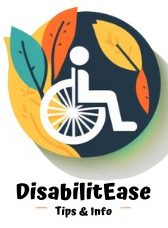Fibromyalgia is a syndrome that typically involves persistent pain throughout a person’s body, tight muscles, and lack of energy with excessive tiredness.

Can fibromyalgia put you in a wheelchair? Fibromyalgia is a disease associated with pain and doesn’t specifically result in paralysis.
You may be able to live healthily and actively while having fibromyalgia with the proper care and therapy, avoiding the necessity of a wheelchair.
The pain the condition produces appears to be brought on by the brain’s control over pain signals rather than by any physical injury or harm.
Table of Contents
Fibromyalgia –
Although researchers are unsure of the exact causation of fibromyalgia, ideas contend that it might be brought on by abnormal central nervous system activity.
In several cases, people have also reported it to frequently develop due to some traumatic event in one’s life. Numerous patients claim that these kinds of situations and incidents cause their symptoms to worsen as well.
Although there isn’t any known cure for fibromyalgia to date, there are multiple effective therapies that help lessen how much the condition affects the life of a patient.
According to studies, females have far higher chances of acquiring fibromyalgia than males, and it appears to afflict persons of all age groups, predominantly those between 30 to 50 years of age.
Symptoms
Other medical disorders may emerge as a result of fibromyalgia as well. Moreover, not everyone encounters all signs and symptoms of the syndrome, which may vary depending on the individual.
Even while fibromyalgia might occasionally get triggered, a few patients would discover that they can still go around and live their everyday lives.
However, other people would experience persistent symptoms that are extremely hard to deal with. Patients also claim that their symptoms vary and alter over time depending on the season.
Specific symptoms could appear for a short while, last a bit, and then disappear before returning.
Some common fibromyalgia symptoms are:
- Shooting, burning, or throbbing pain across the body
- Pain sensitivity
- Fatigue
- Cognitive challenges
- Problem with deep sleep
- Stiff muscles and joints
- Balancing issues
- Food intolerance
- Temperature sensitivity
- Digestive issues
- Headache
Possible Treatments
Several patients have claimed that painkillers like ibuprofen or paracetamol help them manage their symptoms. They aren’t, unfortunately, effective for everyone.
Similar to topical anesthetics, skin-applied gels may not usually provide relief, yet they are useful for decreasing the pain briefly for some patients.
Pregabalin is one example of a medication that a few people receive for treating their nerve pain. Other patients who have discovered that chronic pain causes them to have feelings of depression, anxiety, or fluctuating mood, use antidepressant drugs and medicines to help relieve these signs.
A physiotherapist might be helpful for people with fibromyalgia as well by developing an exercise routine to gradually raise their activity level.
All people having this illness need to exercise regularly as it will help keep their muscles healthy, assisting them in sleeping better while also being suitable for their psychological health.
A few patients discover that a TENS machine, which transmits an electrical current through a body through electrodes affixed with adhesive pads, also assists them in managing their pain.
Can Fibromyalgia Put You In A Wheelchair?
A person with fibromyalgia can get disabilities. Their muscles may get weak if they don’t move due to the pain. They may also require a wheelchair if you are malnourished due to pain-induced depression.
Most of those with this illness have experienced physical or psychological trauma, all of which might necessitate using a wheelchair. Using drugs can exacerbate muscular spasms, which could also require the use of a wheelchair.

Numerous fibromyalgia symptoms might make it difficult for you to conduct strenuous labor. First, the kinds of work surroundings you may work in are severely constrained by sensitivity to sound, light, temperature fluctuations, and scents.
Your ability to walk or stand for extended periods may be hampered by the discomfort linked with the syndrome. Your capacity for lifting, carrying, pushing, pulling, and gripping may also be impacted.
People with fibromyalgia might find it challenging to bend over, walk, and carry out other typical tasks necessary for their daily routines. Even mild physical labor might be challenging due to the fibromyalgia-related pain and tingling that frequently accompanies the condition.
The condition can affect the muscles of a person, which can cause them to quickly lose energy and become exhausted.
Nevertheless, utilizing a wheelchair can assist in reducing discomfort, particularly while moving around on days when the pain is extreme.
Use of A Wheelchair
The person’s specific circumstances and symptoms will determine if the wheelchair should be used full-time or just sometimes, with breaks for walking whenever feasible to prevent their joints and muscles from locking up. However, because wheelchairs offer the required flexibility that is difficult for the patients to enjoy otherwise, they enable people to travel for extended periods and take long walks while suffering little discomfort and pain.
The process of experiencing the symptoms of fibromyalgia is not progressing by itself. Several patients claim they’ve had the disease for decades but do not use a wheelchair. This is still because the symptoms are different for different people at other times.
Thus, it can be stated that Fibromyalgia is a disease associated with pain and doesn’t specifically result in paralysis. You may be able to live healthily and actively while having fibromyalgia with the proper care and therapy, avoiding the necessity of a wheelchair.
Contrary to conditions like arthritis, fibromyalgia syndrome doesn’t harm the joints or bones of a person. This disease will occasionally enter remission if the person takes excellent care of themselves while getting enough exercise and sleep.

Hi, my name is Eddie, I am a professional trainer specializing in the elderly population and I’m also a website designer. I love training in the gym, going to the beach, traveling, and having good food.
I combined my love for sport and website designing to make “DisabilitEase” whose purpose is to help elderly and disabled people live a more full and active life, have more fun, and enjoy their unique journey despite any disability.



